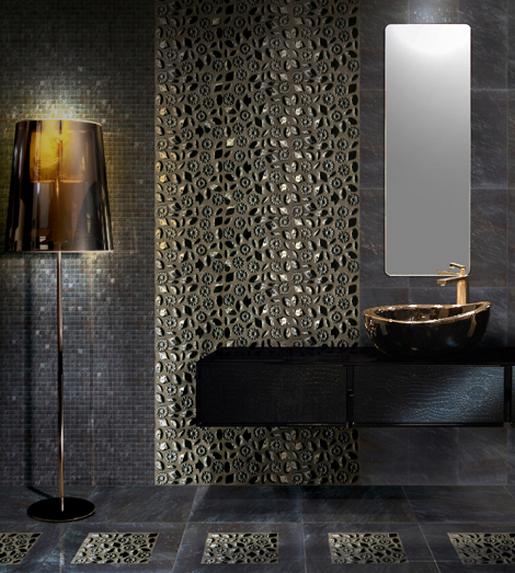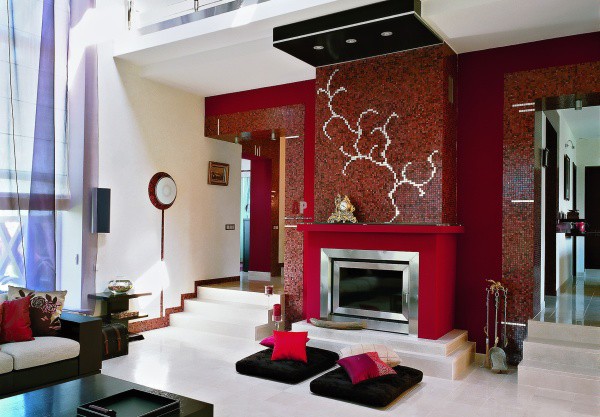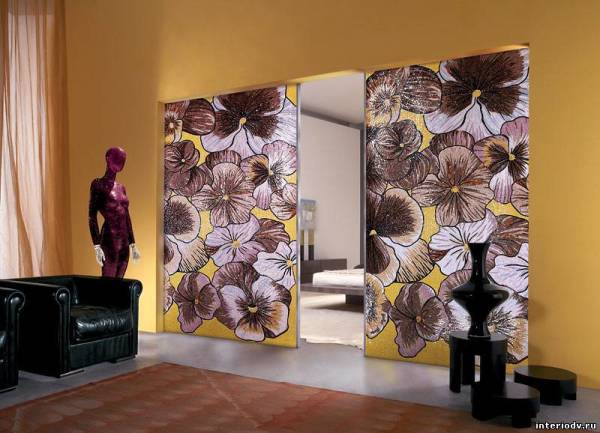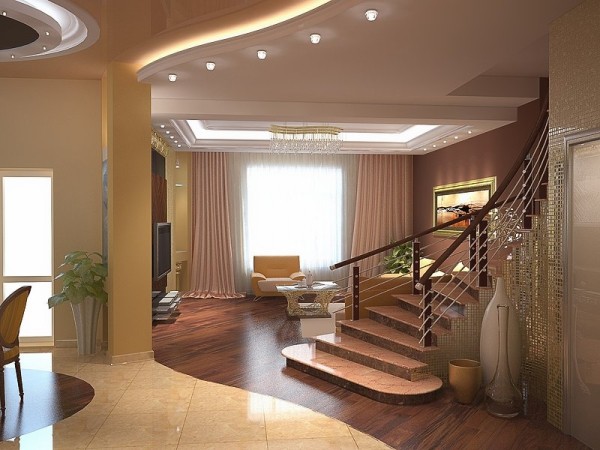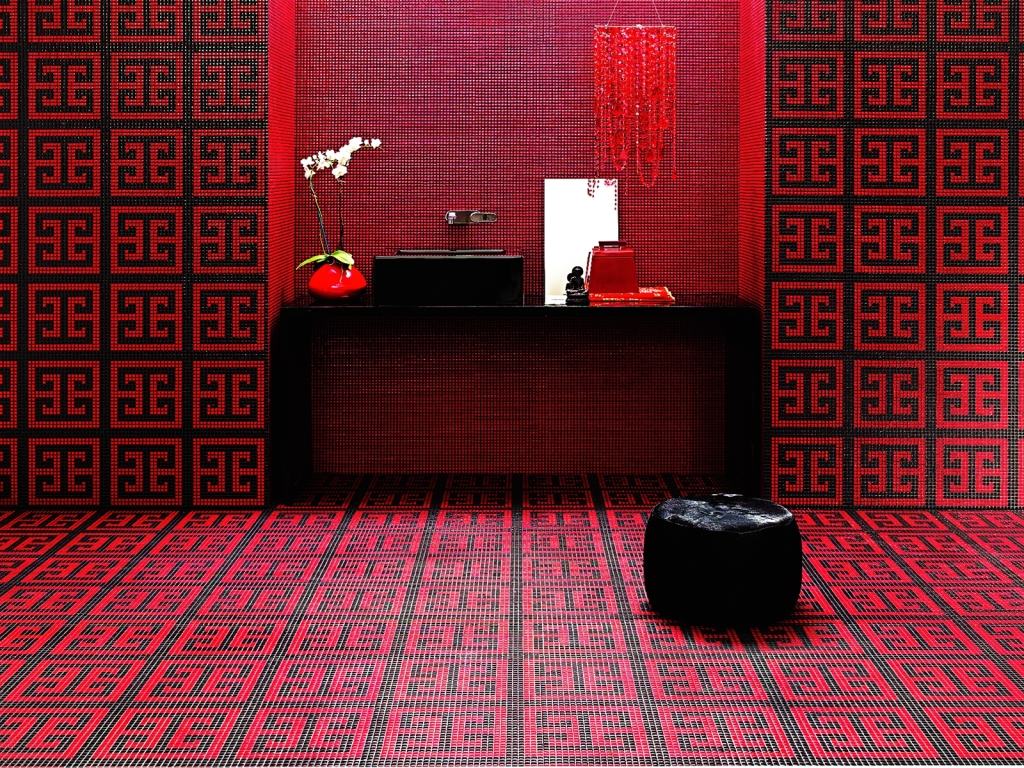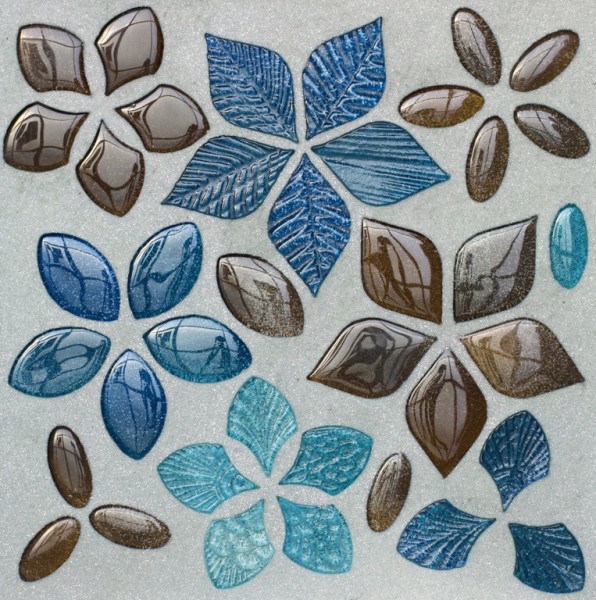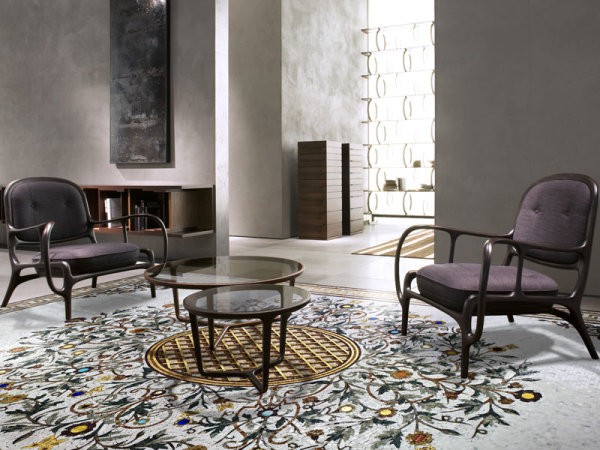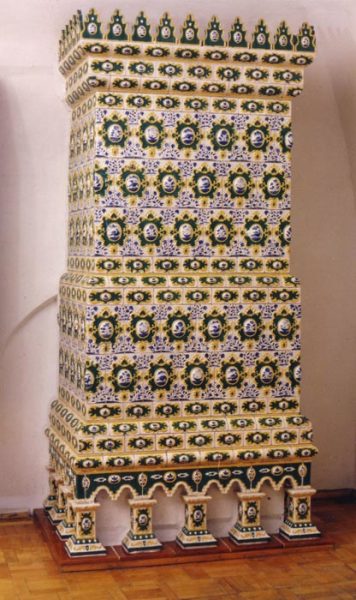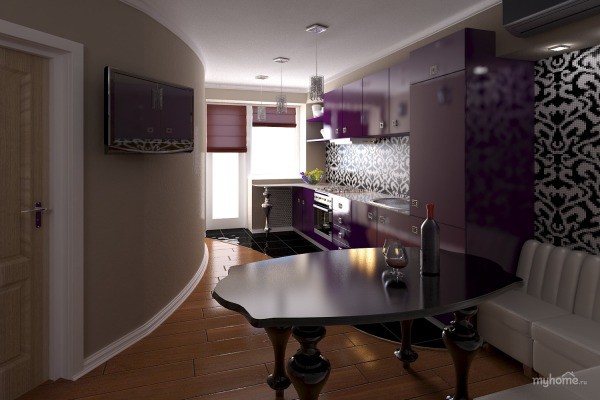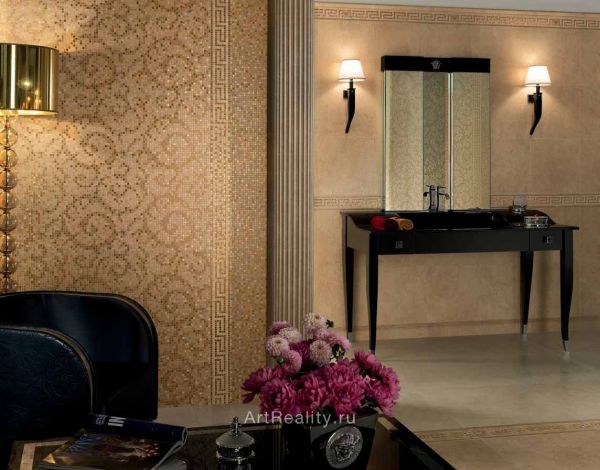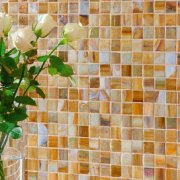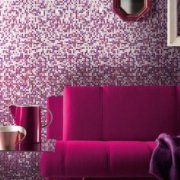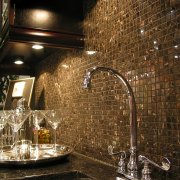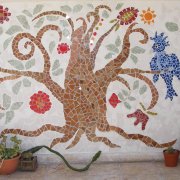Mosaic cladding - all the subtleties of installation and design
Facing mosaic, as a decorative and applied art, originated in the era of antiquity. Moreover, some ancient mosaic panels, containing mainly geometric patterns, or images of plants and mythological animals, have survived to the present.
Such longevity is impressive, and there is hardly any other finish that could compete with mosaics. In our article, we will talk about it.
We will tell you what materials it is made of, as well as instructions and a video on the topic: “How to clad mosaic walls” will be offered to your attention.
The content of the article
A bit about mosaic design
For finishing material, beauty is the highest degree of expediency of use, and in this sense, mosaic meets this requirement in full. She is beautiful in herself, and thanks to well-chosen lighting, she looks like something fantastic.
So:
- We are used to perceiving this type of decoration, mainly, as an option for interior design bathroom, pool, or work wall in the kitchen. Meanwhile, the possibilities of mosaics are such that European designers, not to mention Asian ones, use mosaics in the lining of surfaces in halls, living rooms, and even in bedrooms.
- And it is not only fireplace mantel mosaic, but also the decoration of staircases, walls, floors. In the course of our article, we will give various options for using this material in interior design.
A good master is able to create a miracle, and it would be wrong to say that anyone can make a beautiful panel with their own hands. Here you need skill, creative thinking, a good sense of color, and otherwise, no video will help. - It is not difficult for a professional to convert any, even photographic image into a mosaic, which can, due to the refraction of light, shimmer like a hologram. You just need to enjoy the play of light from afar, and for this reason, the mosaic finish looks better in a spacious room.
If it is a small bathroom, then the mosaic should be without gloss, and small fragments.
- Moreover, mosaic artists manage to veneer not only the surface of the room, but also the objects and accessories inside it: from the bathtub to the kitchen sink. Such an unusual entourage is able to make status the most ordinary interior, which is what many designers use.
- Using mosaics, they focus on a specific area: a wall niche, an arched passage, the side surface of a flight of stairs. In the example above, we see how the mosaic decoration of the sliding door between the living room and bedroom decorates the interior.
- Many types of mosaics are wonderfully combined with mirror and glossy surfaces, so they fit perfectly into some architectural styles: both ancient and modern. In a room where there is a mosaic panel, it will look great, for example, glossy stretch ceiling.
- By the way, the panel does not have to be a wall decoration. It can be applied to a piece of plywood or drywall, framed by a beautiful frame, and placed on the wall instead of a painting.
The myth that the price of mosaic panels is prohibitively high appeared even in those days when this type of decoration automatically attributed the owner of the house to the cream of society.The wall cladding of mosaics today looks status, but it is affordable for ordinary citizens. - The development of digital technology has also contributed to the mosaic technique. The digitized image is the basis for creating on the computer a matrix of individual fragments.
The master can only print it, transfer the drawing to the surface being trimmed, after which it is possible to proceed with the finishing. This cladding technique is called matrix.
It significantly speeds up the process of creating panels, and, accordingly, reduces the cost of work.
What is a mosaic?
The most technologically complex, and, accordingly, the most expensive, is a piece mosaic, assembled from disparate parts. It is for such work that a specialist is required, but for independent work it is better to prefer typesetting cards.
They represent a tile-shaped substrate on which individual elements are already typed into a fragment of the picture.
So:
- Facing with mosaic materials of this type makes it possible to significantly speed up the time for finishing work on surfaces of a large area. Moreover, cutting such a tile is of no difficulty, and you can manually, without difficulty, separate the desired fragment.
- In fairness, it must be said that loose mosaic gives much more scope for creativity.
Each such panel is, as a rule, exclusive. Often, these two methods are combined in the decoration of rooms, because it is almost impossible to finish the whole room with piece mosaics, and very expensive.
Ceramic mosaic finish
The basis for creating mosaics are a variety of materials. One of the most popular options can be considered ceramic chips.
These are small squares that are manufactured using the same technologies as tiles: they are pressed, glazed, fired. There is also a mosaic made of porcelain stoneware, but it is made easier - they simply cut the finished plates into small fragments.
So:
- Traditionally, ceramic mosaics are equipped with square-shaped elements, with slightly varying sizes. Just like tiles, the surface of the chips can be glossy or anti-slip, plain, or multi-color. Stacked cards made of ceramic chips are called carpet mosaic.
- Many manufacturers are experimenting with the shape of chips, with their decorative finishes - down to mother of pearl and gilding. Usually this is the embodiment of design ideas, and more often such options are made to order.
Facing with carpet mosaic, looks equally fine on the wall and on the floor. - From it, the masters lay out panels similar in shape to a carpet lying on the floor, from which, in fact, this type of decoration got its name. Next, we will talk more about this version of the cladding in more detail, but for now, let's talk about the varieties and characteristics of the mosaic itself.
- For floor cladding and stairs, glazed ceramics of double firing is taken, since during the operation such a coating is subjected to significant loads. Facing the furnace with a mosaic, or, for example, a wall adjacent to a flight of stairs, can also be done with more porous single-fired ceramics.
- By the way, facing furnaces with small format mosaics is not often performed, and even then, only in those cases when you need to revet an old oven. Most often, the furnace surface is finished during its construction, and this is done once - and forever.
We are talking about tiles - a special stove tile, which often has a mosaic pattern on the surface.
Square and rectangular ceramic chips are suitable for decoration of almost any room, as well as for facades and internal surfaces of pools. For the design of stairs, this is generally one of the most remarkable options.
Pay attention to our example: mosaic facing is present only on the risers, but each of them has a different ornament. From such a beautiful staircase it is simply impossible to take one's eyes off.
Other mosaic options
The oldest mosaic that has come down to us from Byzantine times is smalt. Over the past centuries, the secret of its manufacture has been lost more than once, and was invented anew.
In fact, this is a variant of glass mosaic, only in this case, glass heated to high temperatures is treated with metal oxides, and at the same time acquires their shades. This is an incredibly durable material, and although smalt is opaque, it seems that it glows from the inside.
So:
- Metal oxides give glass not only its own shade, but also many physical and mechanical qualities, such as abrasion resistance and impact resistance. Facing surfaces with mosaic of smalt makes them “alive”, iridescent, since each cube has its own shade.
- Another extremely popular option is glass mosaic. The technology of its manufacture allows to obtain a material that is much stronger than ordinary silicate-silicon glass, although it does not differ in composition.
In order to avoid the formation of cracks on the surface of the products, the glass melt is poured into molds, burned at 800 degrees, and then gradually cooled. - It turns out not only shockproof, but also refractory glass, with zero water absorption. Thanks to such qualities, mosaic facing of fireplaces is most often made of glass chips. How beautiful it is, you can see in one example at the beginning of the article.
- They also make mosaics from Venetian glass, which is distinguished by manufacturing technology. Such glass is a layered multi-colored roll, which is stretched into a rod, and cut across it, getting multicolor chips. Their configuration depends on the shape of the glass roll.
- Italians invented this mosaic glass, and it is used not only for decoration, but also in the manufacture of various products: from sculptures to jewelry. There are several types of mosaics, mostly piece.
- There are, for example, artists who are able to create wonderful panels from ordinary river pebbles. This design of surfaces is called Roman mosaic, since it has been known to mankind since ancient times.
Such a lining can be seen both on facades of housesso in the bathroom. A stove or fireplace trimmed with pebbles also looks unusual, as you can see by looking at the photo below.
- For five centuries, there has been a Florentine mosaic, which provides for the creation of a picture by combining natural stones of different textures and shades. This technique is based on a careful, without visible seams, fitting of stone plates.
Moreover, not only the color palette of stones, but also their natural pattern is involved in the artistic image.
This is the most time-consuming type of mosaic, and accordingly, the most expensive. In our country, the scope of stone mining has been expanding for centuries, and Russian mosaic appeared on the ideas of Italians.
If the Florentines used ornamental stone for these purposes, today more valuable breeds of stone are used for the manufacture of such mosaics: jasper, malachite, onyx, lapis lazuli, marble.
Subtleties of facing
There are two technologies for laying mosaics. Direct dialing is when an image is drawn from piece elements and fixed in a plaster or adhesive solution.
A set of mosaics from individual chips, provides for preliminary drawing on the wall or floor of the sketch image.
So:
- Some masters do it this way: they put the image from the original on tracing paper, and then transfer it to a fresh plaster or cement screed, and pierce the contour with an awl. The awl holes are sprinkled with dry pigment. After that, methodically removing pieces of raw plaster, paste chips instead.
- The second mosaic technology is called reverse dialing. This is the same case when using matrices with fragments of a picture already typed onto it, in the form of a tile.
At its core, on the back, is a fiberglass mesh that will remain under the mosaic forever. The front side is covered with paper, which after installation is wetted and removed.
- As a rule, tiles have a square shape, with side sizes from 120 to 400 mm, 4-8 mm thick. Matrices are collected in the same place where the mosaic is produced. If it is a panel with an image, it is sold as a kit, with assembly instructions attached to it.
Installation is carried out by glue. We think it is unnecessary to say that the surface under the mosaic facing should be perfectly even. - By the way, mosaic professionals often independently produce enlarged fragments of the image in the form of maps. They take the paper, grease it with any washable glue, and put mosaic particles on it, face down.
Then, a wooden or plastic frame is placed around the perimeter of the sheet, and cement mortar is poured into it. It hardens, and a card with a fragment of the drawing is obtained, it is turned upside down with paper and mounted in an ornament.
After that, the paper is moistened and removed, and the mosaic is ground, and, if necessary, the stitches are painted. Such a card can be made of any kind of chips: even ceramic or smalt, even glass or natural stone.
